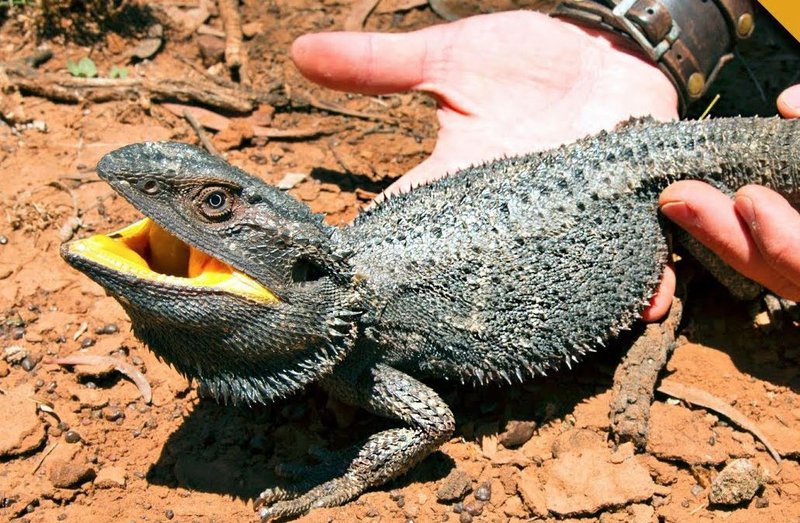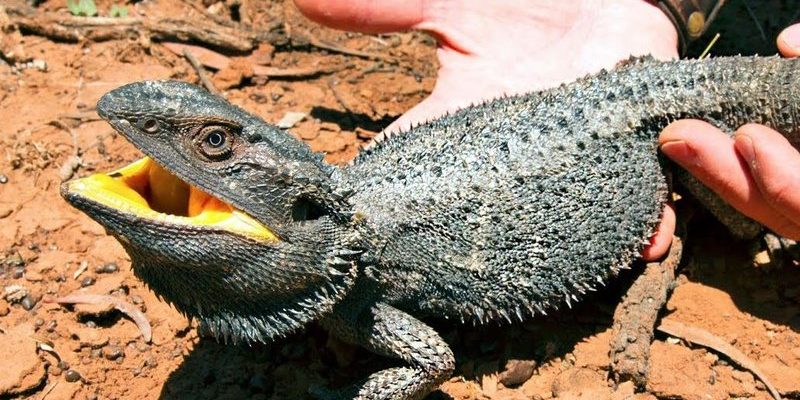
Bearded dragons are native to the arid regions of Australia, where they thrive in dry areas and scrublands. With their friendly demeanor and relatively easy care requirements, these reptiles have become beloved pets. Whether you want to learn about their care, diet, or what makes them tick, this guide will cover everything you need to know about bearded dragons. So, grab a cup of coffee, settle in, and let’s dig into the world of these fascinating reptiles!
Physical Characteristics
Bearded dragons are known for their distinct appearance, which makes them stand out even among other reptiles. They can grow to be quite large for lizards, typically reaching sizes between 18 to 24 inches in length. Their bodies are robust, and they have a somewhat flattened physique, which helps them bask in the sun effectively. The colors of bearded dragons can vary greatly, ranging from earthy browns and tans to brighter shades like orange and yellow, depending on their specific species and morphs.
The most striking feature of a bearded dragon is undoubtedly its throat beard, which can expand dramatically when the lizard feels threatened or is trying to assert dominance. This beard, covered in spiky scales, serves as a means of communication and defense. When fully puffed out, it can intimidate potential predators or rivals. Besides their impressive beards, these lizards also have sharp claws that help them climb, dig, and navigate their environment.
In terms of lifespan, bearded dragons can live up to 10 to 15 years in captivity with proper care. This long lifespan makes them a significant commitment, so potential owners should be aware of the dedication involved. Keeping their skin healthy is also important, as they can suffer from shedding issues if the humidity levels are not properly maintained in their habitats.
Habitat and Enclosure Setup
Creating an appropriate habitat for your bearded dragon is crucial for its health and happiness. In the wild, they inhabit arid desert regions, so replicating that environment in captivity is key. Start with a suitable enclosure; a 40-gallon tank is usually a good size for an adult bearded dragon. Make sure to use a secure lid, as these inquisitive lizards can be quite sneaky when it comes to escaping.
In terms of accessories, a bearded dragon’s enclosure should mimic its natural habitat. This includes providing hiding spots using rocks, logs, and commercial reptile hides. They love to climb, so adding branches or shelves will give them plenty of opportunities to explore. Make sure to use a substrate that is safe and easy to clean, such as reptile carpet or paper towels, as sand can cause impaction if ingested.
Lighting and temperature are also essential components of their habitat. Bearded dragons need a basking spot with temperatures around 95 to 110 degrees Fahrenheit during the day, as well as a cooler area to retreat to when needed. A UVB light is crucial for helping them synthesize vitamin D3, which is essential for calcium absorption and overall health. By providing the right environment, you can ensure that your bearded dragon thrives in its new home.
Diet and Feeding Habits
When it comes to diet, bearded dragons are omnivores, which means they eat a variety of foods. In the wild, their diet includes insects, small animals, and a range of vegetables. You’ll want to replicate this diverse diet when caring for one at home. A good feeding schedule starts with insects like crickets, mealworms, and dubia roaches, which should make up a significant part of their diet, especially for younger dragons.
As they grow, you can introduce a variety of leafy greens such as collard greens, mustard greens, and dandelion greens. Be sure to chop the vegetables into manageable pieces to encourage them to eat. Additionally, offering fruits like strawberries and blueberries can be a tasty treat, but these should only be given sparingly due to their higher sugar content. Always remember to dust insects with calcium powder for healthy growth and bone development.
A common question among new owners is how often to feed their bearded dragons. Young dragons, under six months old, should be fed daily, while adults can thrive on every other day feeding. Monitor their weight and health regularly, adjusting the food amount based on their activity levels and appetite. Providing a balanced diet is essential for their well-being, helping them to avoid health issues like metabolic bone disease.
Behavior and Temperament
One of the best things about bearded dragons is their generally friendly and sociable nature. They tend to be curious creatures, often inspecting their surroundings and interacting with their humans. Many owners find that their bearded dragons enjoy being held and handled, which can forge a strong bond between the lizard and the owner. Handling should be gentle and respectful, ensuring that your dragon feels secure and not stressed.
You might notice that when you approach your bearded dragon, it may wave its arm in a slow, rhythmic motion—this is known as “arm waving,” and it’s a sign of submission or acknowledgment. They can also display a range of behaviors, such as bobbing their heads to show dominance or excitement. Understanding these behaviors can help you better interpret how your dragon is feeling and what it needs.
However, every bearded dragon has its own personality, and some may be more skittish than others. It’s important to create a calm and safe environment so they can feel relaxed. As they get accustomed to their new home, they may become more confident and engaging. Spending time with your bearded dragon will enhance its comfort level and help it thrive in your care.
Health and Wellness
Just like any other pet, bearded dragons can experience health issues. Keeping an eye on their behavior and physical condition can help identify problems early. Common health issues include respiratory infections, parasites, and metabolic bone disease. Maintaining the right temperature and humidity levels will greatly reduce the risk of respiratory problems, while regular vet check-ups can help manage parasites.
Another critical aspect of their health is shedding. Bearded dragons typically shed their skin every few weeks, and this process can sometimes cause issues if they don’t shed completely. Providing proper humidity and a diet rich in vitamins and minerals can help facilitate a healthy shedding process. If you notice any retained shed around the toes or tail, a soak in warm water can facilitate shedding.
If you ever see your dragon behaving unusually or losing weight, it’s best to visit a veterinarian experienced in reptile care. Catching health problems early can lead to better recovery outcomes, ensuring that your bearded dragon continues to live a happy and healthy life.
Breeding Bearded Dragons
If you’re considering breeding bearded dragons, it’s essential to understand the commitment and responsibility that comes with it. Breeding typically requires a male and female dragon, and it’s important to ensure both are healthy and of appropriate age. Generally, bearded dragons can breed at about 18 months old, but breeding should be well thought out to ensure healthy offspring and avoid any stress on the parents.
Once breeding occurs, the female will lay eggs approximately 4 to 6 weeks later. Creating the right conditions for incubation is crucial—this includes a stable environment with the correct temperature and humidity levels. Many owners use vermiculite or perlite as an incubating medium. Depending on the species, the eggs will take about 60 to 80 days to hatch.
After hatching, caring for baby bearded dragons is a different journey altogether. Hatchlings will need their own separate enclosure and a diet high in protein to support their growth. It’s also essential to monitor their health closely during this period. While breeding can be rewarding, it’s important to ensure that you have the time and resources to care for the young dragons once they arrive.
Bearded dragons make wonderful companions with their interactive personalities and unique behaviors. Whether you’re a seasoned reptile owner or considering your first pet, understanding their care needs is essential to ensure they thrive. From setting up the right habitat to providing a balanced diet, every aspect plays a part in their well-being.
The journey of caring for a bearded dragon is filled with joy and learning, so dive right in and embrace the adventure. With patience and dedication, you’ll find that these remarkable lizards can truly brighten up your life!
FAQ
How long can bearded dragons live?
Bearded dragons can live anywhere from 10 to 15 years in captivity with proper care. This lifespan may vary based on diet, habitat conditions, and veterinary care. Providing a balanced diet and the correct environmental conditions plays a crucial role in ensuring their long, healthy life.
What can bearded dragons eat?
Bearded dragons are omnivores and require a varied diet. A mix of insects such as crickets, mealworms, and vegetables like leafy greens is ideal. You can also offer fruits as occasional treats. It’s important to dust insects with calcium powder to support their health.
Do bearded dragons need UV light?
Yes, UV light is essential for bearded dragons. It helps them synthesize vitamin D3, which is crucial for calcium absorption. Providing a proper UVB light source in their habitat is necessary for their overall health and well-being.
Are bearded dragons friendly pets?
Bearded dragons are widely known for their friendly and calm demeanor. They can become quite sociable with regular handling and interaction. Many owners find their dragons enjoy spending time with them, making them excellent companions.
How often should I handle my bearded dragon?
Handling your bearded dragon regularly can help them become more accustomed to human interaction. Aim for a few short sessions each week, allowing your dragon to get comfortable with handling. Always ensure that handling is gentle and that the dragon feels secure.
What temperature should I maintain in the enclosure?
Bearded dragons require a basking area that reaches temperatures around 95 to 110 degrees Fahrenheit. The cooler side of the enclosure should be around 75 to 85 degrees. Maintaining these temperature gradients allows your dragon to regulate its body temperature effectively.
Can bearded dragons live with other reptiles?
While bearded dragons can be social with humans, housing them with other reptiles is not generally recommended. They can exhibit territorial behaviors, which could lead to stress or aggression. It’s best to keep them in their own enclosures for their safety.
What substrate is best for bearded dragon enclosures?
Using safe substrates is essential for bearded dragons. Options like reptile carpet or paper towels are recommended, as they are easy to clean and reduce the risk of ingestion. Sand should be avoided as it can lead to impaction if eaten.
How do I know if my bearded dragon is sick?
Signs of illness in bearded dragons include lethargy, weight loss, lack of appetite, and abnormal behavior. It’s vital to monitor your dragon’s health regularly and seek veterinary advice if you notice any concerning symptoms.
What kind of lighting do bearded dragons need?
Bearded dragons need both UVB light and heat sources in their enclosure. A UVB bulb should provide adequate UV radiation while a basking lamp creates a warm area for them to absorb heat. Make sure to replace these bulbs as they lose effectiveness over time.
Do bearded dragons need a companion?
While bearded dragons can be sociable with humans, they do not require a companion. In fact, housing them with other lizards might lead to stress and territorial disputes. They thrive best when kept individually, allowing them to receive focused care and attention.

